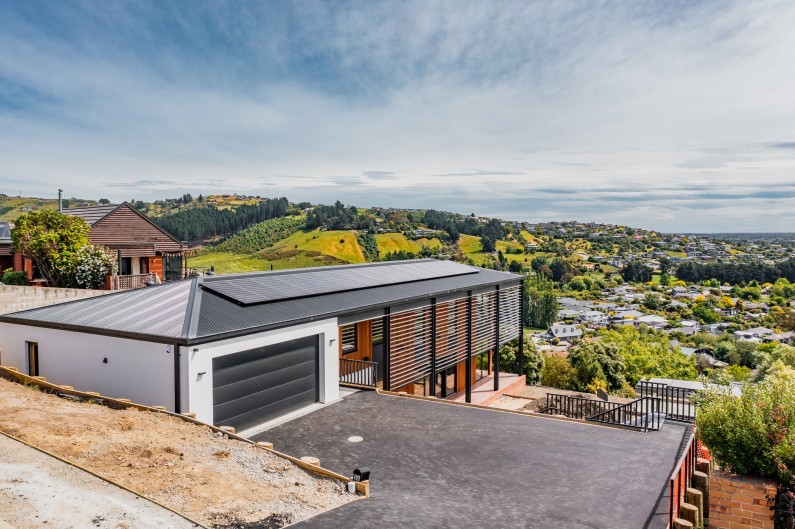Testimonial Video from Cashmere Hills build


This architectural home has been designed to passive house principles. The owners decided not to go through PHPP testing but this did not stop them investing in the performance elements to achieve high performance and create a healthy comfortable home. This home required significant attention to detail, and careful planning and execution of the construction to ensure neither performance nor quality were compromised.
The owners had completed a lot of research culminating in the decision to design & build to passive house principles. Their science background enabled them to understand the principles and science behind it.
Formance SIPs panels have been used over the two storeys and taped and sealed to provide a highly insulating thermal and airtight environment. Imported triple glazed timber windows arguably offer superior performance to uPVC (for a bigger investment). A Zehnder mechanical heat recovery ventilation system has also been installed.
Large exterior louvres assist in mitigating overheating from the larger windows.
The simple two-storey shape is also ideal for passive house design with less surface-to-volume ratio.
This hill site home required extensive foundations and retaining walls. An insulated concrete floor enabled a homogenous thermal envelope to be created.
Additional to the performance elements, a lift was installed to future poof this two-storey hillside build.
Credits to Chatterton Builders, chattertonbuilders.co.nz

Posted 4 years ago by Aza Hawkins
© Formance 2025

Post your comment
Comments
No one has commented on this page yet.
RSS feed for comments on this page | RSS feed for all comments